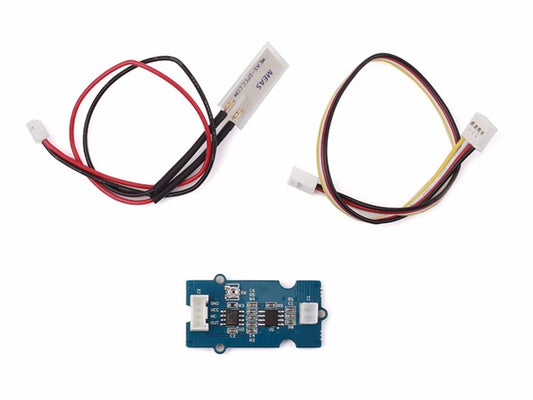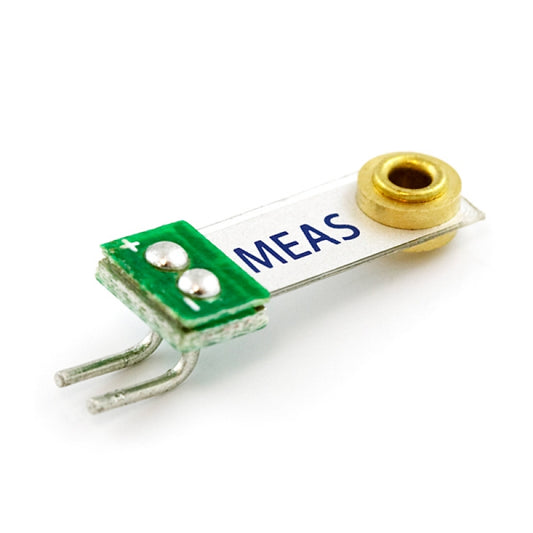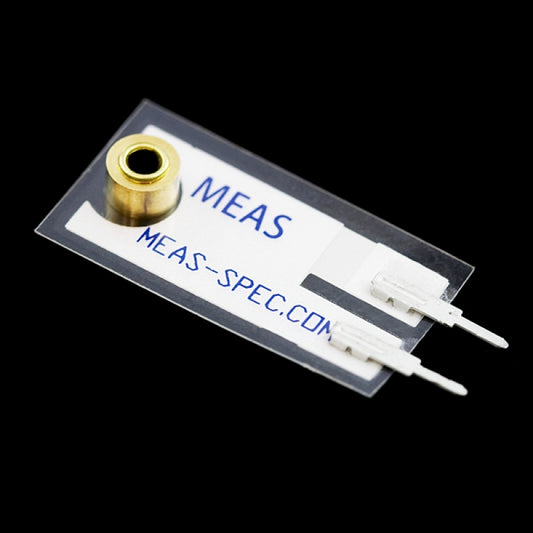Acoustic Sound Vibration Sensors - A sensor is used to measure (sense) an environment and converts this information into a digital or analog data signal that can be interpreted by a computer or observer. Here you will get to know the details about acoustic wave sensors. Able to measure sound levels, an acoustic wave sensor is an electronic device. These devices can detection mechanism is a mechanical (or acoustic) wave. Through a certain material when an acoustic wave (input) travels or along the surface of a material, it is influenced by the different material properties and obstacles it travels through.
To the characteristics of this traveling path, any changes may affect the velocity and/or amplitude of the wave. Using transducers, these characteristics are translated into a digital signal. By measuring the frequency or phase characteristics of the sensor, these changes can be monitored. Then to the corresponding physical differences being measured, these changes can be translated.
All About Acoustic Sound Vibration Sensors
All acoustic wave sensors are delicate to changes from various actual boundaries. These sensors are frequently utilized in the media communications industry. All acoustic wave gadgets fabricated for the broadcast communications industry should be airtightly fixed to forestall any aggravations. The purpose behind this is that these aggravations will be detected by the gadget and cause an undesirable change in yield.
These sensors can be utilized as pressing factor, mass, thickness, force, stun, increasing speed, precise rate, consistency, uprooting, stream, and power identifiers under applied pressure that changes the elements of the item it goes through. Sensors can likewise distinguish mechanical disappointments or hick-ups, for example, crushing of segments. Different applications are the observing of shut frameworks, for example, water pipeline abnormalities, choppiness, clamor in pressure-driven and pneumatic frameworks, and pressing factor changes. The sensors additionally have an acoustic-electric affectability, permitting the recognition of pH levels, ionic foreign substances, and electric fields.
A genuine illustration of an acoustic sensor in nature is the ear. Each living being with ears can identify contrasts in sound waves and make an interpretation of it to significant data. Quite possibly the most recognizable item that utilization an acoustic wave sensor is the mouthpiece. Different models are not also known; the Ultrasonic vibration sensor latently screens ultrasounds created by working hardware. By identifying anomalies in lines, it very well may be associated with alerts or recorders for information logging to guarantee fast identifications of breakdowns.
Advantages of Acoustic Sound Vibration Sensors
Due to their integrated microphone, these devices are able to record noise levels. in the audible frequency spectrum for the human ear, it is able to analyze the surrounding ambient sound showing collected data in dBA. With high levels of noise pollution or with restrictions on noise levels, this information is essential in spaces.
- Through control of ambient sound level, prevention of exposure to high levels.
- Allowing a detailed knowledge of the sound activity in a certain area, monitoring of noise levels in both open spaces and closed spaces.
Frequently Asked Questions
What are ultrasonic sensors?
Ultrasonic sensors are modern control gadgets that utilization sound waves over 20,000 Hz, past the scope of human hearing, to gauge and compute the distance from the sensor to a predetermined objective item.
How does an ultrasonic sensor work?
The sensor has a fired transducer that vibrates when electrical energy is applied to it. The vibrations pack and extend air atoms in waves from the sensor face to an objective article. A transducer both communicates and gets sound. The ultrasonic sensor will quantify distance by transmitting a sound wave and afterward "tuning in" for a set timeframe, taking into account the return reverberation of the sound wave bobbing off the objective, prior to retransmitting.
When might I utilize an ultrasonic sensor?
Since ultrasonic sensors utilize sound instead of light for recognition, they work in applications where photoelectric sensors may not. Ultrasonic sensors are an incredible answer for clear item discovery and for fluid level estimation, applications that photoelectric sensors battle with due to target clarity. Target tone or potentially reflectivity don't influence ultrasonic sensors which can work dependably in high-glare conditions.
When would it be advisable for me to utilize an ultrasonic sensor versus an optical sensor?
Ultrasonic sensors offer benefits when detecting clear articles, fluid level,s or exceptionally intelligent or metallic surfaces. Ultrasonic sensors likewise work well in wet conditions while an optical bar may refract off the water beads. In any case, ultrasonic sensors are defenseless to temperature variances or wind. With optical sensors, you can likewise have a little spot size, quick reaction and in certain occasions, you can extend a noticeable spot on an objective to assist with sensor arrangement.
Final Thought
Above mentioned are the detailed information about the Acoustic Sound Vibration Sensors, these help to sense the sound, vibrations with perfections, moreover, these devices are extremely essential, it also provides an ease to the telecommunication industry as well, we have provided the detailed aspects of acoustic sound vibration sensors, check above with required information.
 Sold out
Sold out




